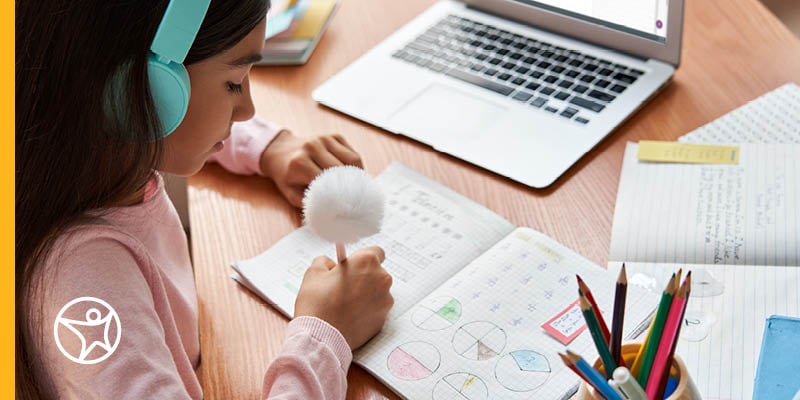How to Help High School Students Prepare for Midterm Exams
by Julie Hersum
byCassandra Polzin
3 min to readTaking good notes is an effective way to improve comprehension and knowledge retention, but if your child has ADHD or otherwise struggles to pay attention in class, you may worry that they aren’t retaining knowledge from their lessons.
Explore the benefits of doodling and scribbling while studying for students who struggle with staying focused.
It may sound slightly counterintuitive to suggest that a student who struggles to focus on their virtual lessons should consider doodling or scribbling during class. However, studies have proven the benefits of doodling and scribbling while studying.
Listening to virtual lessons alone can be monotonous and boring for students, causing their mind to wander elsewhere. Doodling or scribbling while studying engages different parts of the brain, allowing improved focus on the content being discussed. The benefits of doodling are so impactful that dozens of presidents have leveraged this technique.

From scribbling while studying to getting organized, there are a few different techniques students can leverage, whether they have ADHD, occasionally struggle with focusing, or find it more productive to doodle while studying.
Just as it’s best to have a plan before diving into anything, effective note-taking should be the same—go in with a strategy. Students may find it helpful to try out a few different note-taking methods to find how they can best pull pertinent information from the lesson or text they are reading. But for students diagnosed with ADHD , this may be easier said than done. To ensure they are still getting the most out of their notes, they may benefit from thinking critically about what’s most important to write down, ensuring they understand the notes they’re taking and jot down any questions they have, in the moment, that they should ask their teacher about after class.
If your student easily loses focus, taking notes may be easiest when doodling or fidgeting. Doodling and scribbling while studying are two effective strategies for improving knowledge retention, as doodling or scribbling during lessons allows your student to focus better on the information being shared. But if doodling isn’t for them, they may find another form of fidgeting, like sitting on a stability ball or using a fidget toy, more beneficial. The key to introducing these strategies is to ensure that a slight distraction doesn’t become a real distraction down the line.
Even the most focused learners need to revisit their notes, so staying organized will make it easier for students to review their notes ahead of exams. However, if their notes are disorganized, it can be hard to find the most important information between the doodles in the margins.
Instead, make sure students write the class name at the top of their notes, along with the lesson’s main topic. It can also help to write down the date of the lecture. Just doing this one small thing can help students better recall information and reach out to their teachers if they have additional questions.
If possible, keep separate notebooks or use subject dividers for each class, so they can easily find their notes when it’s time to study.
Within 24 hours of taking the notes, students should make time to review them. Some students with ADHD find it helps to read their notes out loud, pausing to highlight important sections and document any questions that arise.
When it’s time to prepare for an exam, it can be particularly beneficial to reorganize the most important notes visually. Students might use a mind map or other graphical organizer to display key concepts.
Each student is different, so if one strategy doesn’t work well for them, encourage them to experiment with other tactics until they find one that works for them.
